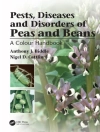The topics addressed in this book are of vital importance to the survival of humankind. Agricultural biodiversity, encompassing genetic diversity as well as human knowledge, is the base upon which agricultural production has been built, and protecting this resource is critical to ensuring the capacity of current and future generations to adapt to unforeseen challenges. Agricultural biodiversity underpins the productivity of all agricultural systems and is particularly important for poor and food-insecure farmers, who maintain highly diverse production systems in response to the marginal and risky production conditions they operate under. Understanding the importance of agricultural biodiversity in the livelihoods of the food insecure and enhancing its performance through the use of a variety of tools, including biotechnology, is a critically important issue in the world today, where over 800 million people have insufficient food to meet minimum needs. A strong theme that runs throughout the book is the importance of good public policy interventions to promote the provision of public goods associated with agricultural biodiversity conservation and directing biotechnology development to meet the needs of the poor. The book’s primary innovation is that it describes the relationship between biotechnology and plant genetic diversity and puts these in the context of agricultural development. Both the conservation of plant genetic diversity and agricultural biotechnology have received extensive examination, but the linkages between the two have not, despite the apparently obvious relationship between the two.
Зміст
Overview and Key Issues.- Intoduction~ Agricultural Biodiversity and Biotechnology:.- Major Processes Shaping the Evolution of Agriculture, Biotechnology, and Biodiversity.- Private Research and Public Goods: Implications of Biotechnology for Biodiversity.- Genetic Resources and Biodiversity: Economic Valuation and Conservation.- The Economic Value of Genetic Diversity for Crop Improvement: Theory and Application.- Managing Crop Biological Diversity on Farms.- In Situ Conservation: Methods and Costs.- Understanding the Factors Driving on Farm Crop Genetic Diversity: Empirical Evidence from Mexico.- Costs of Conservation: National and International Roles.- Distributional Issues in the Management of Plant Genetic Resources.- The Sharing of Benefits from the Utilization of Plant Genetic Resources for Food and Agriculture.- Economic Criteria for the Multilateral Distribution of Agricultural Biodiversity Conservation Funds.- Modeling the impacts of Bargaining Power in the Multilateral Distribution of Agricultural Biodiversity Conservation Funds.- Biotechnology: Concepts, Values, and Management.- Agricultural Biotechnology: Concepts, Evolution, and Applications.- The Potential of Biotechnology to Promote Agricultural Development and Food Security.- Impact of Biotechnology on Crop Genetic Diversity.- Establishing Effective Intellectual Property Rights And Reducing Barriers To Entry In Canadian Agricultural Biotechnology Research.- Adoption of Biotechnology in Developing Countries.- Biodiversity, Biotechnology, and Development: Policy Implications.- Technological Change in Agriculture and Poverty Reduction: The Potential Role of Biotechnology.- Towards an Intellectual Property Clearinghouse for Agricultural Biotechnology.- Policies to Promote the Conservation and Sustainable Use of Agricultural Biodiversity.- International Treaty on Plant Genetic Resources for Food and Agriculture and Other International Agreements on Plant Genetic Resources and Related Biotechnologies.- Synthesis Chapter: Managing Plant Genetic Diversity and Agricultural Biotechnology for Development.












